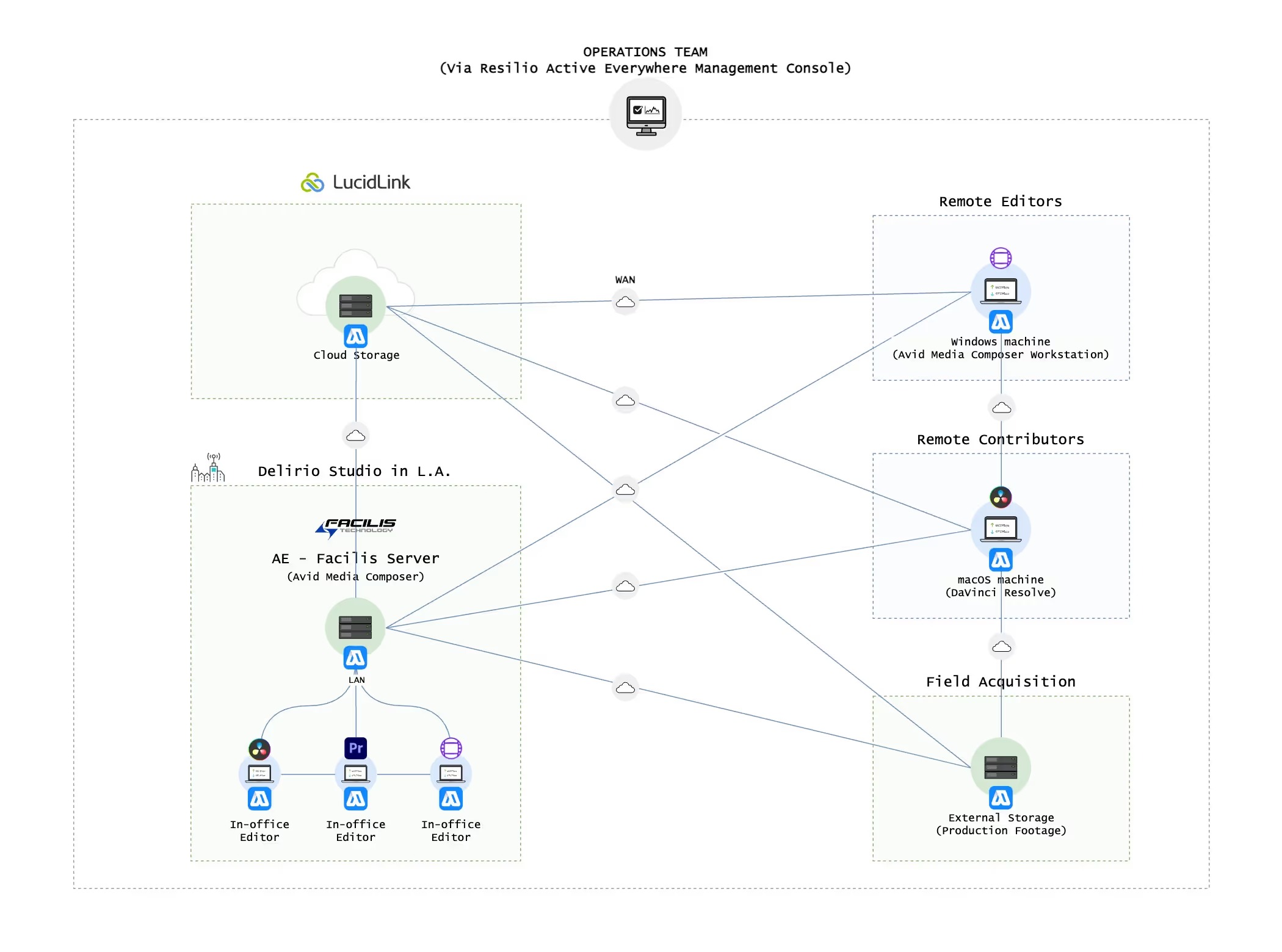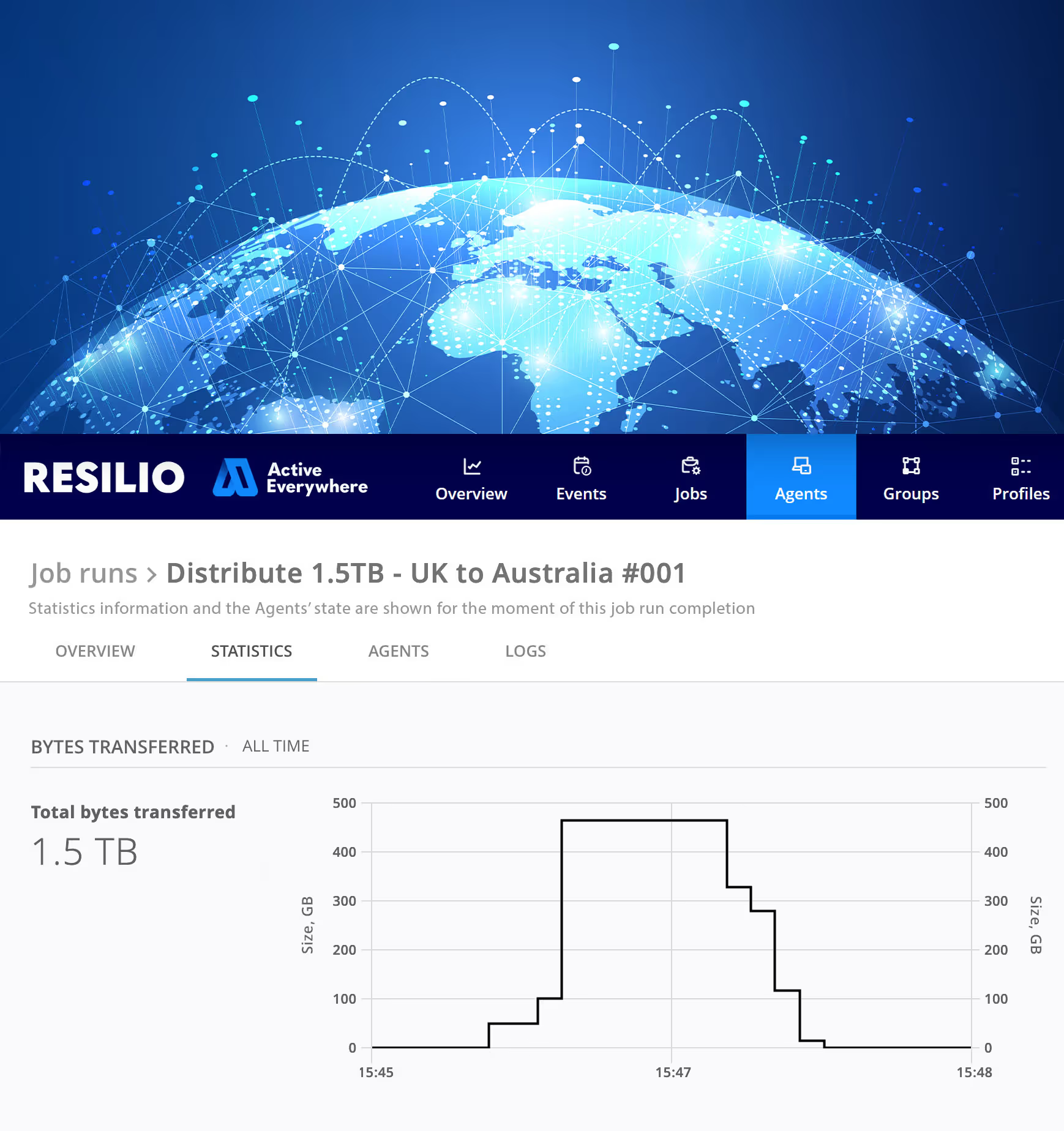High Availability in Media Production: Keep Your Content Flowing Without Disruption


Introduction
As an engineer in media and entertainment, you know that smooth system operation is crucial for meeting deadlines and maintaining positive relationships with production partners. Any downtime can disrupt productivity and impact project timelines. High Availability (HA) solutions play a vital role in ensuring continuous access to content, even during system failures or outages.
High Availability refers to a system’s ability to continue operating without disruption, even in an outage or failure. In media production, this means ensuring your content is always available to your collaborators, no matter what happens behind the scenes.
HA systems have two main types of failover modes:
Active-Active Setup: In an active-active configuration, all system components run simultaneously. This approach ensures immediate failover without downtime and optimizes system performance by maximizing resource utilization.
Active-Standby Setup: In an active-standby setup, a primary component handles the workload while a secondary component remains ready for failover. Although this approach results in rapid switchovers, it may underutilize resources during regular operation.
From Failover Modes to Geographic Distribution & Hot Disaster Recovery Site
Now that we’ve covered the failover modes—active-active and active-standby—it’s time to consider the broader picture. Geographic distribution and disaster recovery sites are pivotal in ensuring high availability and resilience across multiple locations. Let’s delve into why this matters for your media production infrastructure.
What happens if a significant disaster takes out an entire site? That’s where geographic distribution and hot site disaster recovery come in. A hot disaster recovery site maintains an up-to-date copy of all the data and is ready to take over instantly if the primary site fails. The geographical distribution reduces the likelihood of both sites going down simultaneously.
If one site goes down, the other seamlessly takes over, ensuring your content keeps flowing to the artists, editors, and producers responsible for maintaining the project on time and under budget.
One of our media production customers, Delirio Films, requires a globally distributed team to work collaboratively under multiple deadlines. Resilio Active Everywhere enables their remote contributors to seamlessly collaborate and create from anywhere, using Delirio’s existing workflow of Avid Media Composer, Adobe Premiere Pro, DaVinci Resolve, LucidLink, and Facilis. Instead of managing media files, editorial proxies, and shuttle drives—the Resilio platform automates data flows—allowing the editing team to focus on creative and produce more in a fixed amount of time. Under the covers, Resilio is keeping media assets current within seconds and accessible to contributors everywhere.

We’ve discussed the importance of geographic distribution and disaster recovery mechanisms for your core infrastructure. Now, let’s focus on how hybrid workers play a crucial role in enhancing the high availability of data.
The Link Between Hybrid Work and High Availability
Your hybrid workers give you high availability, geographic distribution, and disaster recovery?! Certainly! Hybrid work enhances data availability. When each remote user maintains a local copy of the data, several benefits emerge:
Reduced Dependency on Central Servers: remote users can access critical files with local copies even if the central server experiences downtime or connectivity issues. Users can continue working seamlessly without relying solely on a single point of access.
Faster Retrieval and Responsiveness: local copies minimize latency. Users retrieve data directly from their devices, avoiding delays caused by network latency or server congestion. Quick access improves productivity and user satisfaction.
Offline Access: remote users can work offline, accessing and modifying data without an active internet connection. Once back online, changes synchronize with the central server, ensuring data consistency.
Resilience Against Network Failures: network disruptions won’t halt work. Users continue using their local copies until connectivity is restored. This resilience is crucial for uninterrupted productivity.
Data Availability: each user becomes a geographically distributed, up-to-date data source, improving data availability.
By embracing High Availability solutions like those offered by Resilio, you can optimize your media production and distribution infrastructure, reduce costs, and improve the performance of your existing IT hardware investments.
With a resilient and efficient infrastructure, you can focus on delivering to deadline without worrying about the underlying hardware. Resilience matters—get active everywhere and keep your content flowing!

Try a GFS Solution Built for Scale
See the difference a distributed global file system approach makes for reliability, speed, and reducing egress costs with massive data movement.

About The Author


I lead business development outreach at Resilio, specializing in data workflows for media and entertainment companies. I love working with our motorsports clients, solving data movement challenges on the track to keep racing teams one step ahead. 'If you ain't first, you're last.' – Ricky Bobby
Featured Resources

Active Everywhere for Hybrid Cloud
One platform for centralized cloud storage with fast local access and built-in data protection.

Global Construction Company
A North American Engineering and Construction Leader Improved VDI User Experience with Resilio Platform and Hybrid Cloud

Global Data Protection Company
Enabling bidirectional sync of all user profiles, user data, and applications across sites for DFS and VMware Horizon Dynamic Environment Manager (DEM).
